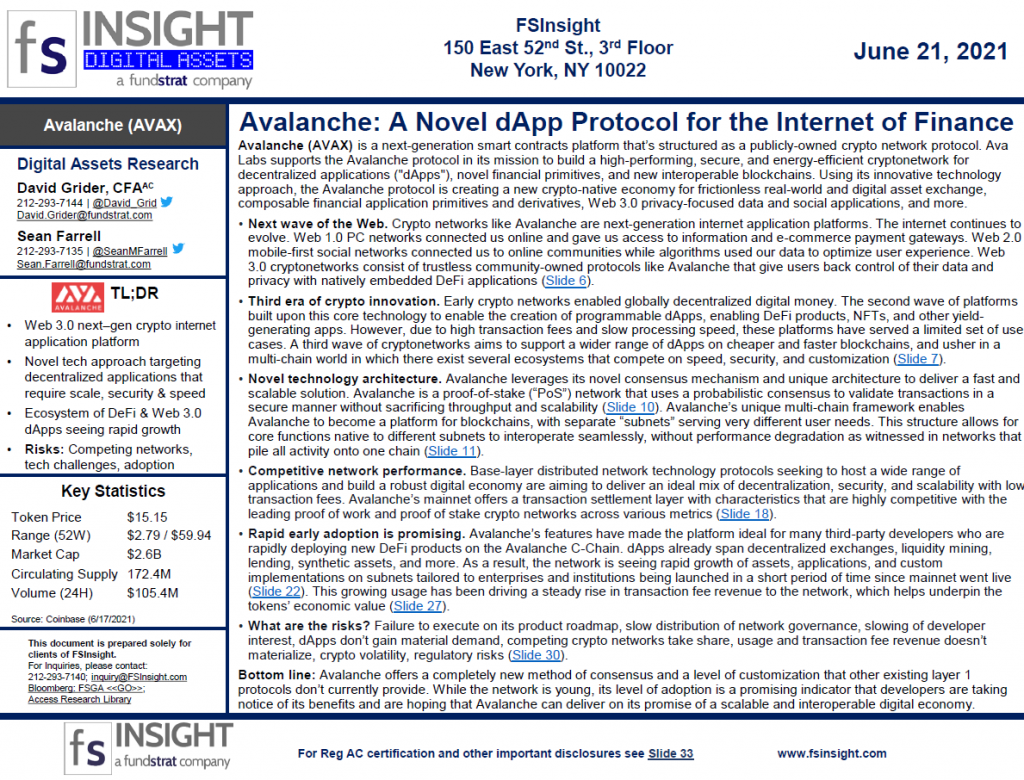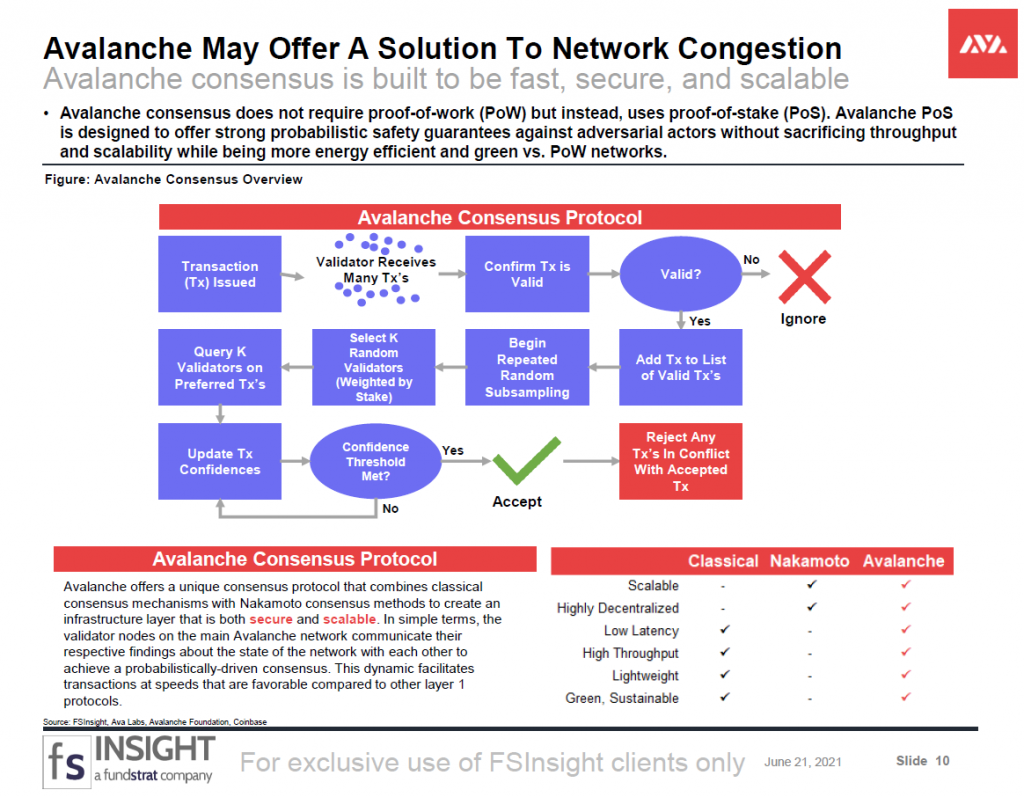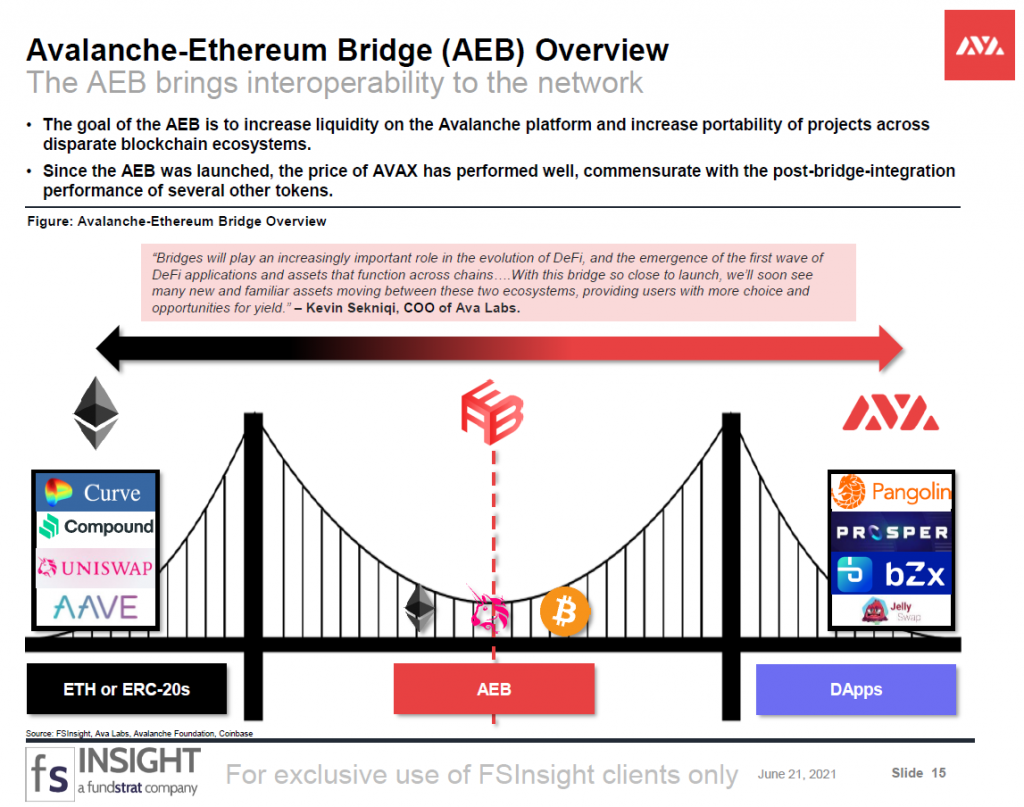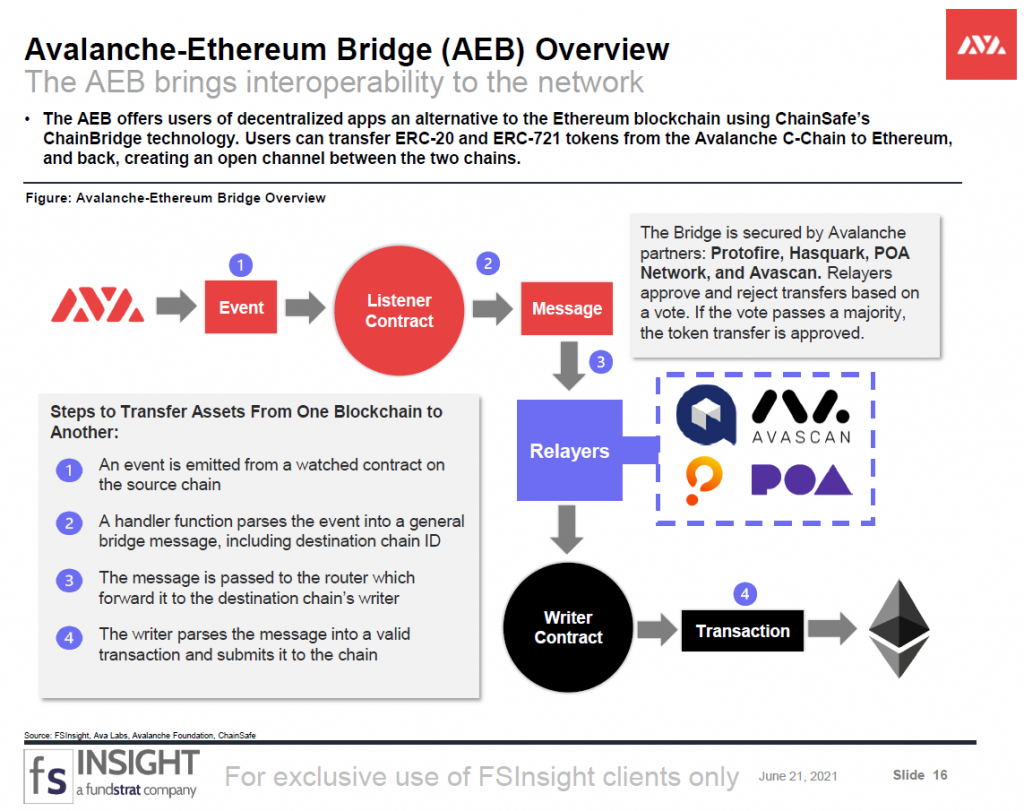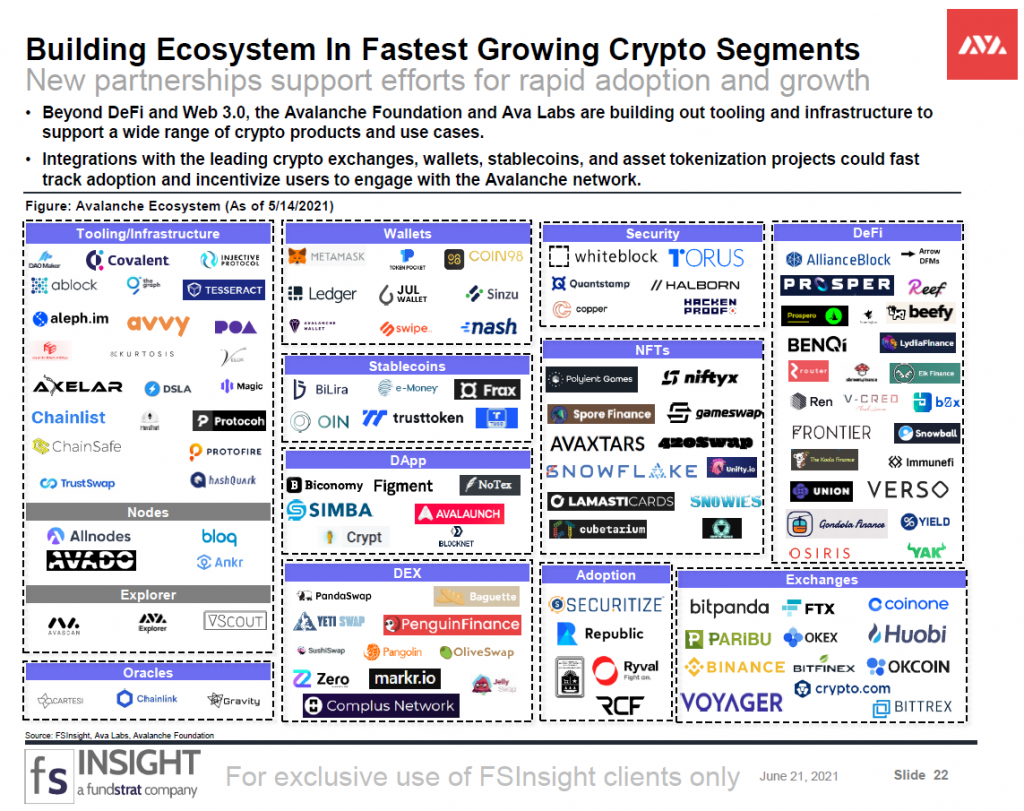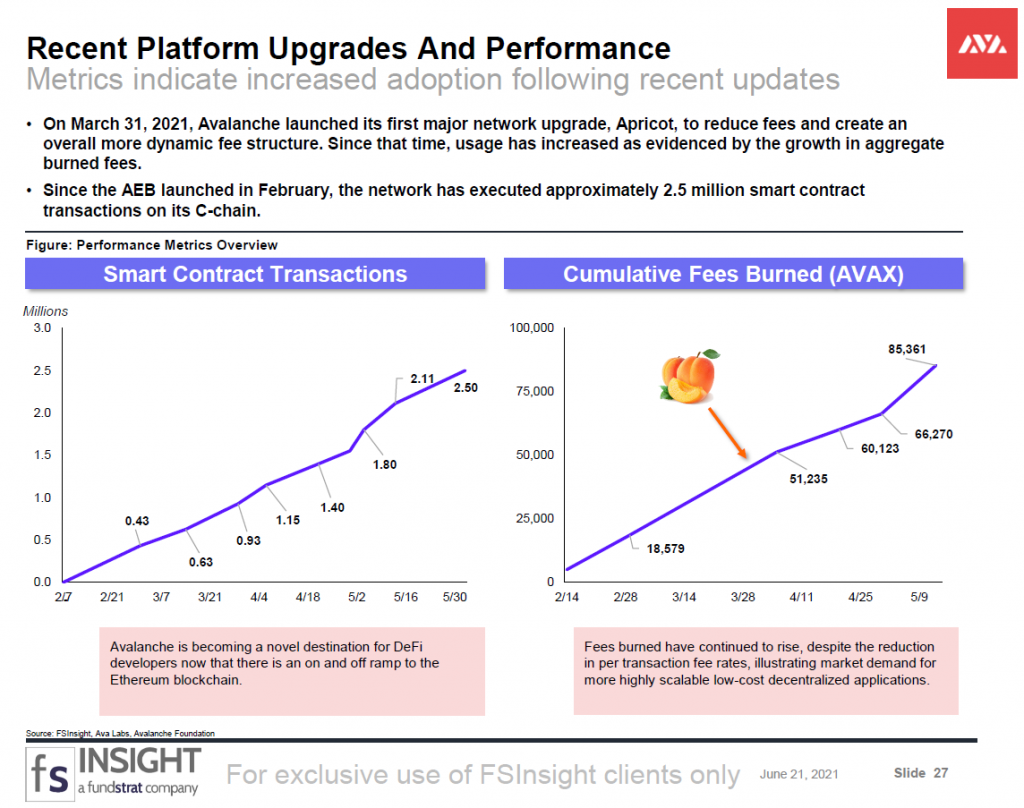Avalanche: A Novel dApp Protocol for the Internet of Finance
CLICK HERE for the full copy of this report in PDF format.
Avalanche (AVAX) is a next-generation smart contracts platform that’s structured as a publicly-owned crypto network protocol. Ava Labs supports the Avalanche protocol in its mission to build a high-performing, secure, and energy-efficient cryptonetwork for decentralized applications (“dApps”), novel financial primitives, and new interoperable blockchains. Using its innovative technology approach, the Avalanche protocol is creating a new crypto-native economy for frictionless real-world and digital asset exchange, composable financial application primitives and derivatives, Web 3.0 privacy-focused data and social applications, and more.
- Next wave of the Web. Crypto networks like Avalanche are next-generation internet application platforms. The internet continues to evolve. Web 1.0 PC networks connected us online and gave us access to information and e-commerce payment gateways. Web 2.0 mobile-first social networks connected us to online communities while algorithms used our data to optimize user experience. Web 3.0 cryptonetworks consist of trustless community-owned protocols like Avalanche that give users back control of their data and privacy with natively embedded DeFi applications (Slide 6).
- Third era of crypto innovation. Early crypto networks enabled globally decentralized digital money. The second wave of platforms built upon this core technology to enable the creation of programmable dApps, enabling DeFi products, NFTs, and other yield-generating apps. However, due to high transaction fees and slow processing speed, these platforms have served a limited set of use cases. A third wave of cryptonetworks aims to support a wider range of dApps on cheaper and faster blockchains, and usher in a multi-chain world in which there exist several ecosystems that compete on speed, security, and customization (Slide 7).
- Novel technology architecture. Avalanche leverages its novel consensus mechanism and unique architecture to deliver a fast and scalable solution. Avalanche is a proof-of-stake (“PoS”) network that uses a probabilistic consensus to validate transactions in a secure manner without sacrificing throughput and scalability (Slide 10). Avalanche’s unique multi-chain framework enables Avalanche to become a platform for blockchains, with separate “subnets” serving very different user needs. This structure allows for core functions native to different subnets to interoperate seamlessly, without performance degradation as witnessed in networks that pile all activity onto one chain (Slide 11).
- Competitive network performance. Base-layer distributed network technology protocols seeking to host a wide range of applications and build a robust digital economy are aiming to deliver an ideal mix of decentralization, security, and scalability with low transaction fees. Avalanche’s mainnet offers a transaction settlement layer with characteristics that are highly competitive with the leading proof of work and proof of stake crypto networks across various metrics (Slide 18).
- Rapid early adoption is promising. Avalanche’s features have made the platform ideal for many third-party developers who are rapidly deploying new DeFi products on the Avalanche C-Chain. dApps already span decentralized exchanges, liquidity mining, lending, synthetic assets, and more. As a result, the network is seeing rapid growth of assets, applications, and custom implementations on subnets tailored to enterprises and institutions being launched in a short period of time since mainnet went live (Slide 22). This growing usage has been driving a steady rise in transaction fee revenue to the network, which helps underpin the tokens’ economic value (Slide 27).
- What are the risks? Failure to execute on its product roadmap, slow distribution of network governance, slowing of developer interest, dApps don’t gain material demand, competing crypto networks take share, usage and transaction fee revenue doesn’t materialize, crypto volatility, regulatory risks (Slide 30).
Bottom line: Avalanche offers a completely new method of consensus and a level of customization that other existing layer 1 protocols don’t currently provide. While the network is young, its level of adoption is a promising indicator that developers are taking notice of its benefits and are hoping that Avalanche can deliver on its promise of a scalable and interoperable digital economy.
Key slides from this report…
Cover Page (Slide 1)…
Avalanche May Offer A Solution To Network Congestion (Slide 10)…
Avalanche Ethereum Bridge (AEB) Overview (Slide 15)…
Avalanche Ethereum Bridge (AEB) Overview (Slide 16)…
Building Ecosystem In Fastest Growing Crypto Segments (Slide 22)…
Recent Platform Upgrades And Performance (Slide 27)…



